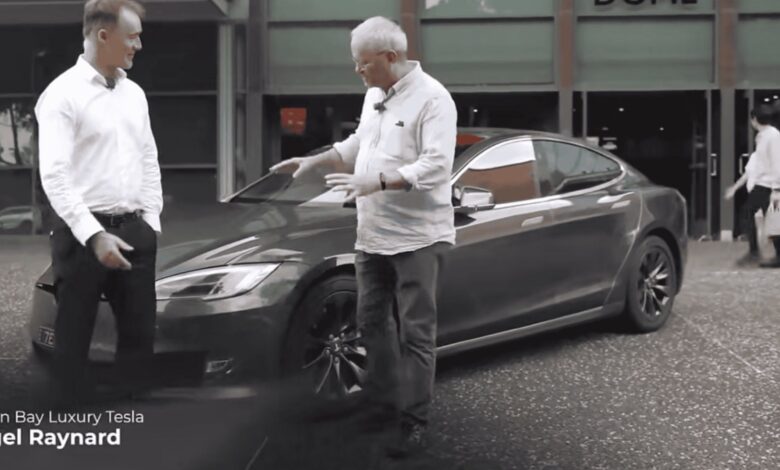a Tesla owner’s story on the sustainability and innovation of electric vehicles

The world of electric vehicles is littered with stories of innovation, endurance and technological breakthroughs, but few are as captivating as that of Nigel and his Tesla, which traveled an impressive distance of 707,000 kilometers. “It’s the equivalent of going to the moon and re-entering the Earth’s atmosphere,” Nigel points out, not without a touch of pride. This remarkable milestone highlights not only the sustainability of electric vehicles, but also the evolving relationship between humans and automotive technology.
The journey up to 707,000 kilometers
Nigel’s Tesla, a symbol of electric vehicle (EV) sustainability, has seen vast stretches of road and racked up mileage that most vehicles can barely contemplate. The 707,000 kilometer clock isn’t just a number—it’s a story of reliability and the potential of EVs for long-term use without significant environmental impacts. The journey highlights a crucial advance in automotive technology, highlighting that electric cars are not only suitable for short urban journeys, but also capable of substantial long-distance travel.
Battery longevity and replacement
A crucial aspect of Nigel’s story is battery longevity. “The original Tesla battery lasted incredibly well to reach 666,000 kilometers,” a distance that stands in stark contrast to popular belief about the lifespan of EV batteries. Nigel’s experiment provides tangible proof that electric vehicle batteries can sustain over long distances and durations, challenging traditional concerns about the useful life of EV batteries.
However, no technology is without challenges. Nigel encountered an error code on his Tesla’s battery after traveling with a customer from Brisbane, precisely 666,666 kilometers away, a combination of circumstances marked by a string of six. Despite this unforeseen event, the situation was far from disastrous. Tesla’s eight-year, unlimited mileage warranty played its part, ensuring that battery issues were dealt with without major inconveniences. This warranty not only protects Nigel but also reinforces the reliable customer service and support that Tesla provides to its users, crucial to fostering long-term trust and satisfaction.
Implications for electric vehicle technology
Nigel’s experience is more than just personal success; it serves as a case study for the potential and sustainability of electric vehicles. Its story provides concrete proof that EVs can match and even surpass the longevity and performance of traditional combustion engine vehicles. This is particularly significant at a time when the global community is intensely focused on reducing carbon emissions and transitioning to sustainable energy solutions.
Additionally, the success of battery replacement highlights the importance of robust support systems and warranties that can encourage more consumers to switch to electric vehicles. Knowing that their investment is protected can help alleviate some of the apprehensions potential buyers might have about the technology.
Conclusion
As electric vehicles continue to develop and become more integrated into our daily lives, stories like Nigel’s are not just tales of personal achievement but key milestones on the path to technological progress and environmental stewardship. They highlight long-term EV use practices and battery reliability, crucial for the global shift to sustainable transportation solutions.



